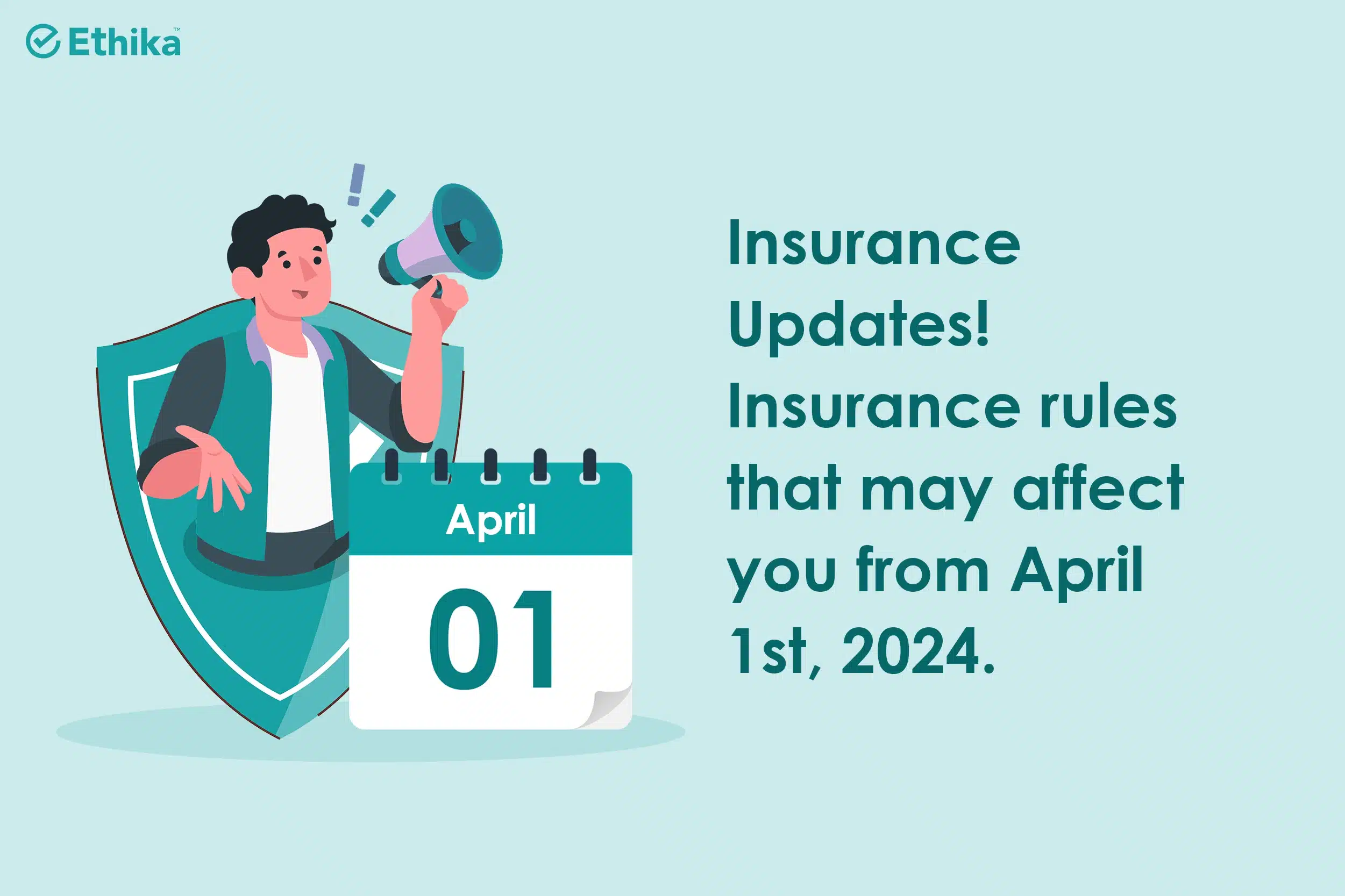
Starting April 1, 2024 there are two insurance rules that may impact the policyholders. These 2 rules are:
- Mandatory issuance of insurance policies in electronic accounts
- Change in surrender charges for life insurance plans.
Mandatory e-Insurance Account is for all the new insurance policies that would be issued from April 1, 2024 and the change in surrender charges would only affect life insurance policyholders.
Let us have a detailed understanding of these two changes proposed by the Insurance Regulatory and Development Authority of India (IRDAI).
What’s on this page?
Update 1: Mandatory e-Insurance Account (e-IA) for new policyholders
The first change that is proposed by IRDAI is directing the insurance companies to issue all the new policies through an e-Insurance Account starting April 1,2024. Customers availing insurance plans are required to do the transactions through the e-Insurance Account.
The e-IA is similar to the demat account where you can hold all your insurance policies in a single place. The e-Insurance account can be opened from any of the 4 repositories available in India –
- CAMS Insurance repository
- Karvy
- NSDL Database Management (NDML) and
- Central Insurance Repository of India
The main aim of this rule is to facilitate the issuance and storage of all the insurance plans in one place. Policyholders can be benefitted in various ways such as:-
- Policyholders need not worry about the storage and access of their insurance plans as all their plans can be stored online in their e- Insurance Account (e-IA).
- No need to worry about losing the insurance policy copy as the policy copy would be available online in the e-Insurance account (e-IA).
- All forms of insurance – Life, Non-life and Health can be stored in the e-Insurance account (e-IA).
- One can easily view, maintain and update their details through the e-Insurance account (e-IA).
- Only One account per person is permitted.
- The charges of opening an e-Insurance account (e-IA) would be borne by the insurance company.
- This new rule is applicable only to new insurance plans being purchased by the policyholders. Policyholders are free to upload their existing insurance policies to their e-Insurance account (e-IA).
- Family members can easily access the policy details in case of absence (due to death or disability) of the policyholder.
Update 2: Major Changes in Life Insurance Surrender Charges
The other major update proposed by the Insurance Regulatory and Development Authority of India is the changes in surrender values for non-linked or linked life insurance plans such as traditional and endowment plans.
Linked life insurance plans are those whose returns are linked to the performance of the market whereas non-linked insurance plans have a predetermined maturity value.
The surrender values are classified into 4 different slabs depending on the time of surrender of the policy from the policy start date.
| Type of Policy | Surrender year (No. of years from the policy start date) | Surrender Value |
| Traditional & Endowment – Linked & Non- Linked | 2nd year (2 years after policy start date) | 30% of the total premiums paid till date |
| Traditional & Endowment – Linked & Non- Linked | 3rd year (3 years after policy start date) | 35% of the total premiums paid till date |
| Traditional & Endowment – Linked & Non- Linked | 4rth-7th year (4-7 years after policy start date) | 50% of the total premiums paid till date |
| Traditional & Endowment – Linked & Non- Linked | Anytime in the last 2 years of the policy period | 90% of the total premiums paid till date |
This change is directed to affect the customers heavily as the insurance companies would now pay reduced surrender value if customers surrender their life insurance plans in early stages of the policy period. In other words, if customers hold the policy for more than a number of years, the surrender value would increase proportionately to the age of the policy.
This move was aimed at providing relief to the insurance companies suffering from high surrender values which is ultimately affecting their profitability and intermediary payout as well.
If there is a mis-selling, then the customers would stand out to lose with the new surrender charges as they would only get 1/3rd of the premium amount paid if the policy is surrendered within the first 2-3 years and they would be forced to continue with the policy premium payments for the rest of the policy period to avail maximum benefits from the policy.
Mis-selling happens when the insurance intermediaries sell one insurance plan instead of another to their customers on the basis of false promises. For example, intermediaries may sell non-linked insurance plans promising high returns when in reality non-linked insurance plans have almost a fixed maturity amount unlike linked insurance plans in which the maturity amount depends on the performance of the market.
These two changes may affect people who are purchasing new insurance plans from April 1, 2024 and linked and non-linked life insurance policyholders who wish to surrender their plans.
FAQs
What is the concept of e-insurance?
e-Insurance as a concept refers to the process of storing, viewing and editing the insurance policies online.
Is eIA account mandatory?
Yes. From April 1, 2024 all the new insurance policies issued should be linked to an e-Insurance Account.
Can I have multiple e-insurance accounts?
No. As per the latest circular from the Insurance Regulatory and Development Authority of India one policyholder should have only one e-Insurance Account.
What is NIR ?
NIR refers to NSDL National Insurance Repository which is one of the 4 insurance repositories that are allowed to open e-Insurance Accounts for policyholders.
What are the benefits of e insurance?
e-Insurance allows you to access your insurance policies at any point of time online without worrying about losing the hard copy. It would also be helpful for the family members of the insured policyholder.